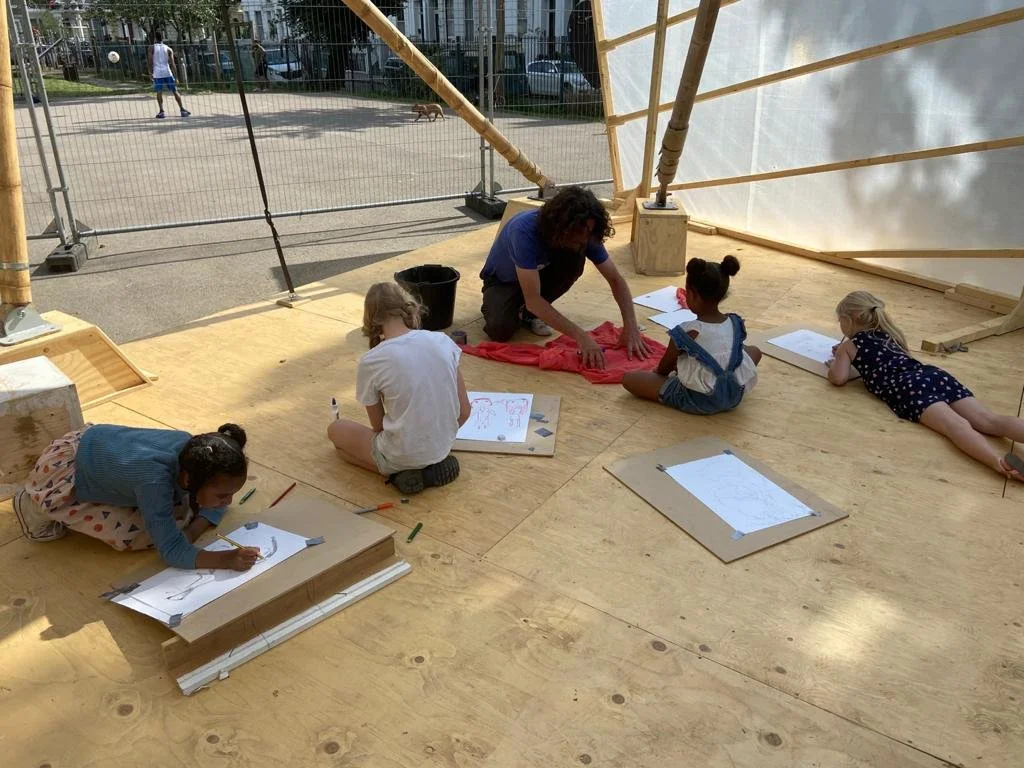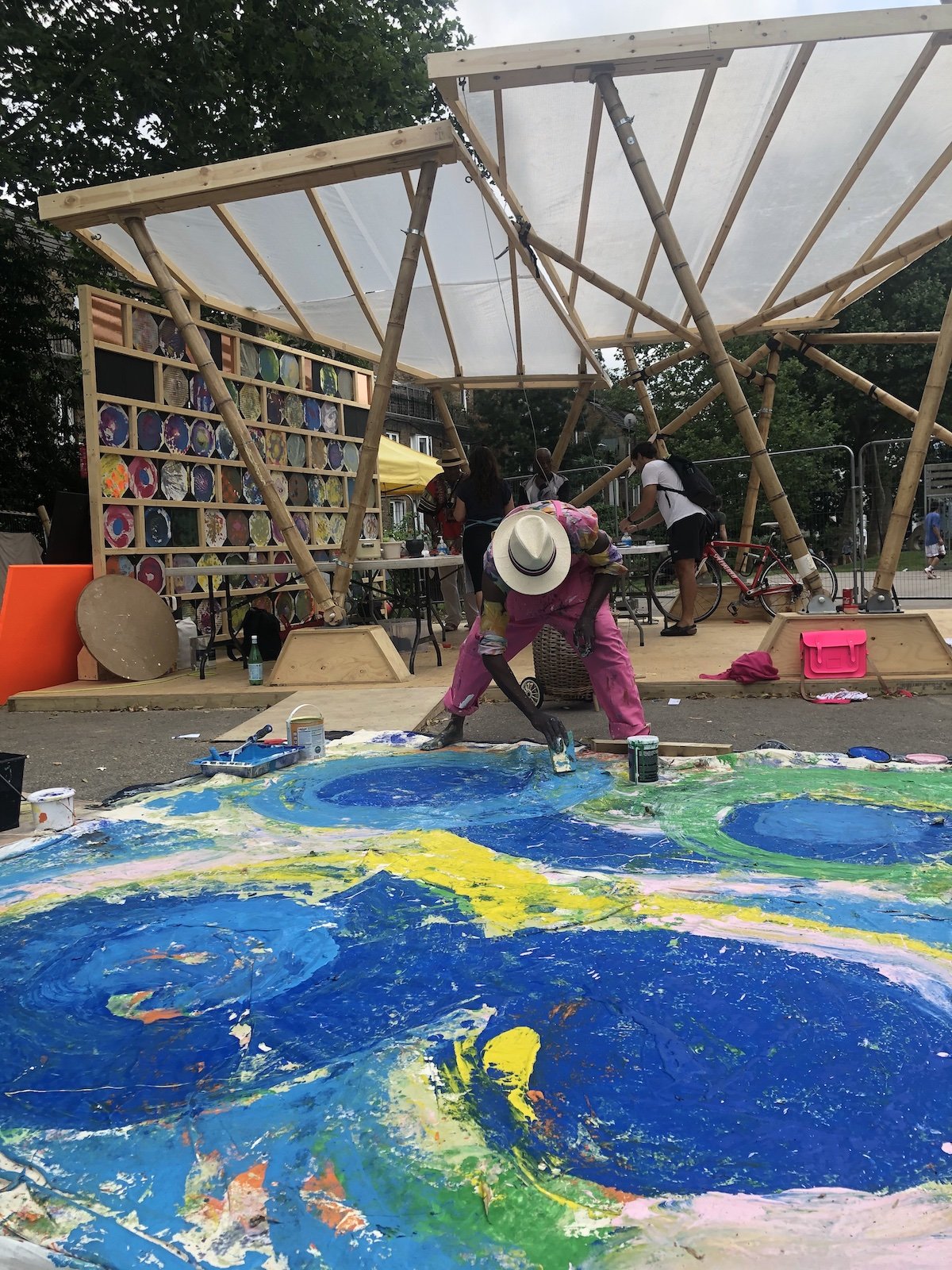
The Bamboo Pavilion constructed at Powis Square in 2018 represents a prime example of a temporary art pavilion. Here's how the inclusion of this specific project contributes to the understanding of temporary pavilions:
The goal is to expand the practical possibilities of the contemporary post-globalization culture’s engagement with arts, performance, architectural design, space and place, activity and economy, town planning and public amenity, and the ongoing societal negotiation with the complex informational, social, energetic and material dynamics of the man-made and natural environment.


Bamboo Pavilion at Powis Square 2018:
Sustainable Material and Construction: The use of bamboo in the pavilion's construction aligns with sustainable and eco-friendly building practices. Bamboo is a renewable resource known for its strength, versatility, and rapid growth, making it an excellent choice for temporary structures focused on sustainability.
Community-Centric Design: The Bamboo Pavilion's location in a public park signifies a community-centered approach. By placing the pavilion in a public space, it creates a focal point for community engagement, artistic expression, and various cultural activities.
Facilitating Community Art Activities: The pavilion's purpose in facilitating community art activities emphasizes its role as a creative hub. It offers a platform for local artists and community members to come together, collaborate, and showcase their talents, further strengthening community bonds.
Fostering Cultural Exchange: Public art activities hosted within the Bamboo Pavilion encourage cultural exchange and understanding. Different artistic styles, traditions, and perspectives can be celebrated and shared, enriching the cultural fabric of the community.
Temporary Structure for Flexibility: The temporality of the pavilion allows for adaptability and flexibility in its usage. It can be repurposed for various community events, workshops, exhibitions, or performances, showcasing the multifunctional nature of temporary pavilions.
Integration with Nature: Bamboo, as a natural material, visually harmonizes with the park environment. Its organic form and aesthetics seamlessly blend into the surrounding greenery, reinforcing a sense of unity with nature.
Artistic Expression and Design Innovation: The pavilion's design demonstrates innovative use of bamboo and architectural techniques. It showcases how unconventional materials can be utilized creatively to construct captivating temporary structures that inspire both artists and the public.
Incorporating the Bamboo Pavilion at Powis Square into the discussion emphasizes the importance of sustainability, community engagement, and artistic collaboration within the context of temporary art pavilions. It underlines how such pavilions can serve as catalysts for creativity, environmental consciousness, and community-building.